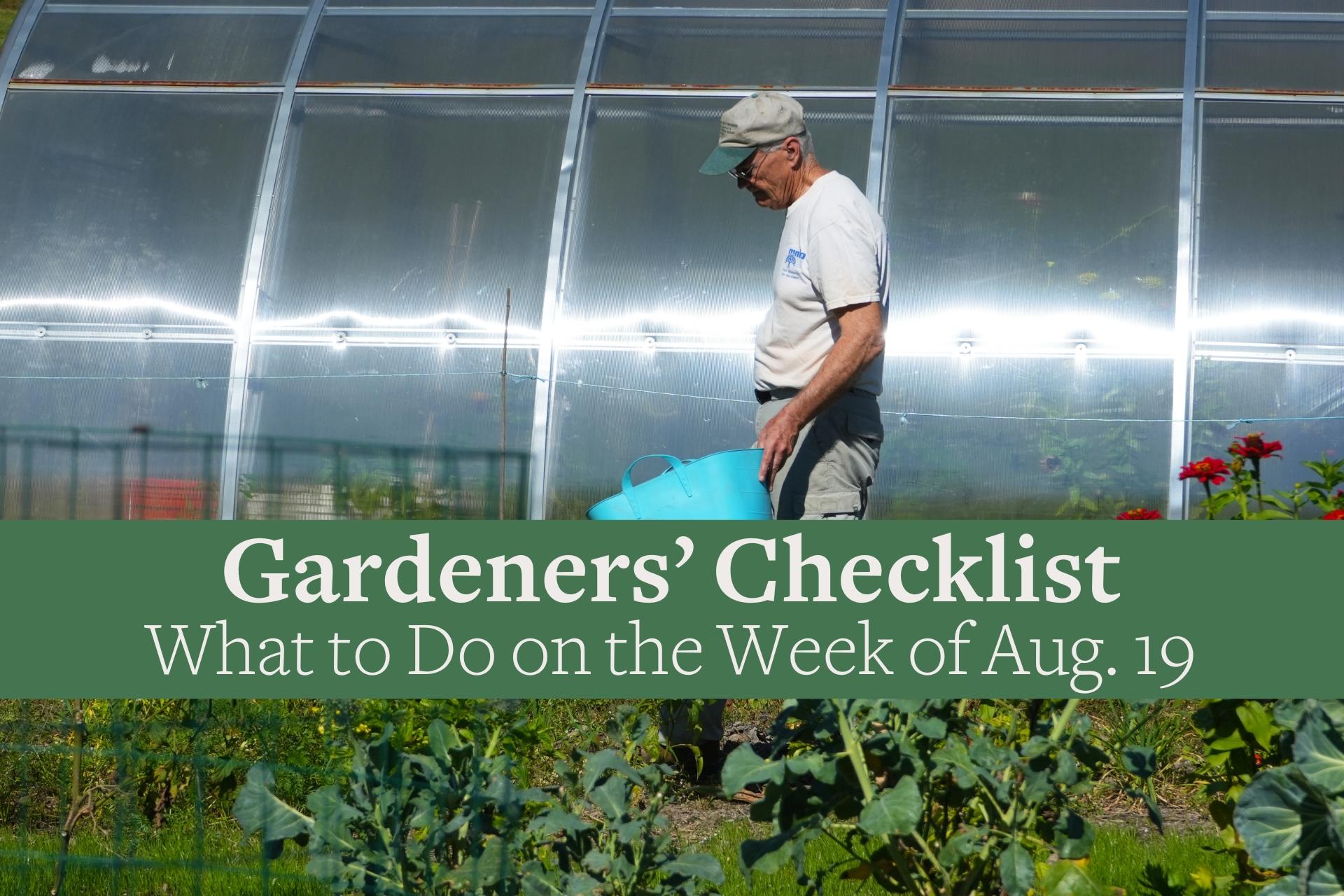You are here
Gardeners Checklist: Here Is What to Do on the Week of Aug. 19
Gardeners Checklist: Here Is What to Do on the Week of Aug. 19
By Ron Kujawski
* Harvest cantaloupe when the stem readily separates from the fruit with gentle thumb pressure. Watermelons are ripe when the underside of the melon in contact with the ground turns yellow. Another sign of a ripe watermelon is when the tendril nearest the fruit turns brown.
* Take cuttings from garden-grown geraniums. Root these in a 50-50 mixture of peat moss and sand or perlite. Try cuttings of other garden annuals that you want to grow as houseplants through the winter. After potting up rooted cuttings, place the plants in a sunny window or under lights for growing on through the winter.
* Examine garden beds and place stakes in the ground in spots where bulbs are to be planted this fall. Also, look over the landscape for niches suitable for spring flowering bulbs. I much prefer to plant bulbs in small groups in such nooks and crannies than in formal beds. Identifying these planting locations now will help in planning bulb purchases next month.
* Keep feeding container-grown plants about every two weeks with a water-soluble fertilizer. If slow-release fertilizer had been incorporated into the container soil mix at the beginning of the season, this may not be necessary. Make that decision based on the plants. Some slow-release fertilizers may not last the entire season. If plant foliage is pale or yellowing, apply fertilizer.
* Do not apply fertilizer to roses the rest of this growing season. Their growth needs to slow down as we head into fall so that the plants are properly hardened for winter.
* Extend the flowering season by planting chrysanthemums and asters in flower beds, patio pots or window boxes.
* Continue to seed bare spots in lawns. Keep the soil moist until the grass seed germinates and then gradually cut back on the water by making deep but less frequent applications. Allow seedling grass to grow to three inches in height before mowing back to a height of two inches.
*
I enjoy watching dragonflies hovering or zooming over gardens, lawns and landscapes, especially aquatic areas. It is not unusual to see dozens of them at a time. This may be frightening to some people who fear that these large insects are pests. Fear not. They are harmless to people, pets and plants. In fact, they are beneficial in that they prey on mosquitoes, gnats and other annoying insects. They are fun to watch as they zig zag over fen and field snatching pesky insects out of the air.
Ron Kujawski began gardening at an early age on his family's onion farm in upstate New York. Although now retired, he spent most of his career teaching at the UMass Extension Service. He serves on Berkshire Botanical Garden’s Horticulture Advisory Committee. His book, Week-by-Week Vegetable Gardener’s Handbook, is available here.
Help Our Garden Grow!
Your donation helps us to educate and inspire visitors of all ages on the art and science of gardening and the preservation of our environment.
All Donations are 100 percent tax deductible.


